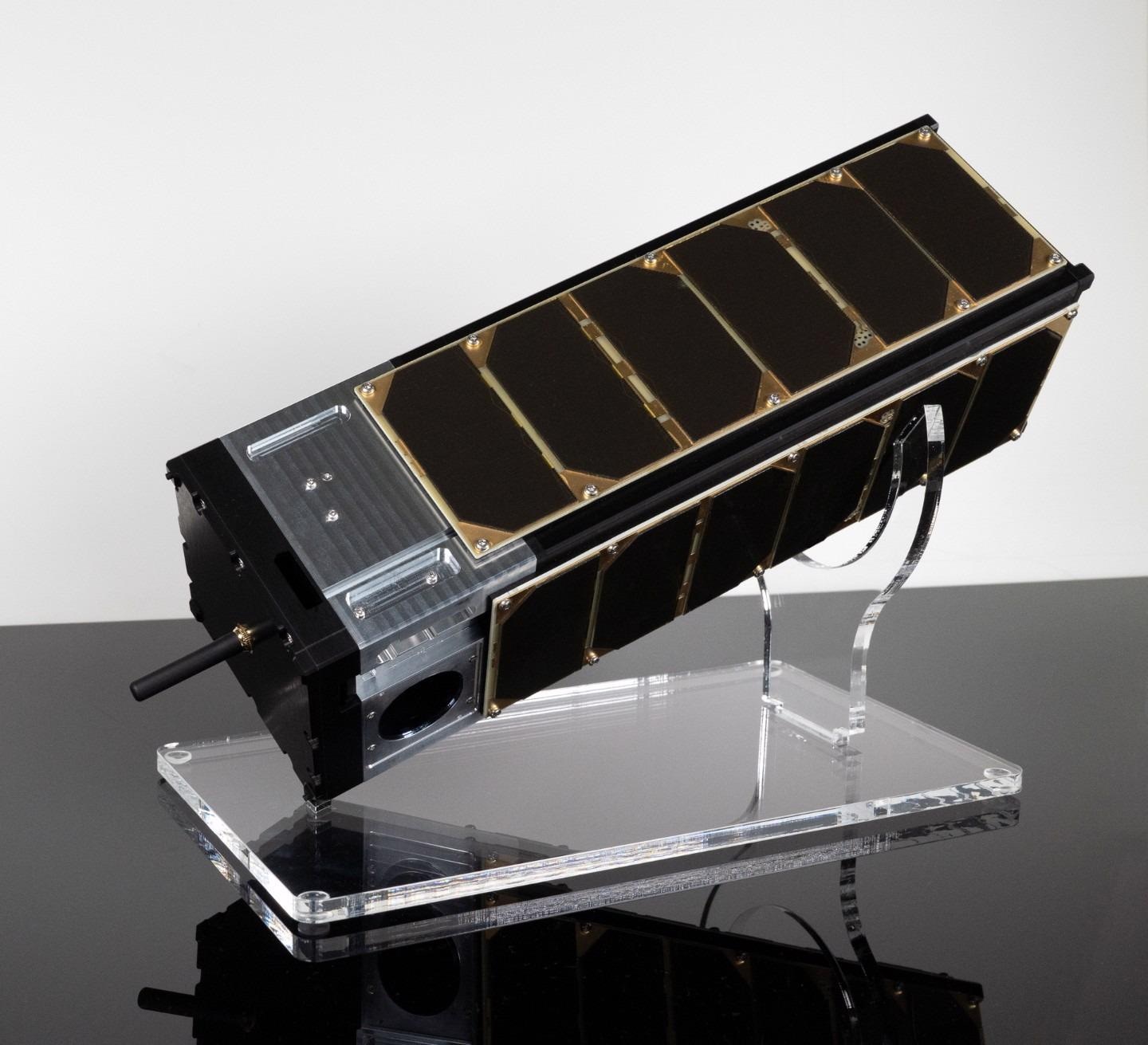Reviewed by Alex SmithSep 7 2021
The capacity demands for data transmissions are ever-increasing. New data highways for digital consumption are under research globally, as the common frequencies have already reached saturation.
 The W-Cube nanosatellite transmits test signals at an altitude of 500 kilometers in the Q and W band (37.5 and 75 GHz) in order to explore new frequencies for future data transmissions. Image Credit: Fraunhofer IAF.
The W-Cube nanosatellite transmits test signals at an altitude of 500 kilometers in the Q and W band (37.5 and 75 GHz) in order to explore new frequencies for future data transmissions. Image Credit: Fraunhofer IAF.
To connect new, powerful satellites to the Internet in the future, the project Advanced Technology CubeSat-based W-band channel measurements (ARTES) is testing the unused frequencies in the Q and W band (37.5 and 75 GHz). This is the world’s first Low Earth Orbit (LEO) mission in this frequency range.
Prior to the satellite journey, it is necessary to develop the hardware and build it in the first half of the project. Fraunhofer Institute for Applied Solid State Physics IAF developed the transmitter modules and extremely low-noise receiver modules, which form the key components. The introduction of the nanosatellite marks the starting of the two-year measurement campaign in which test signals are regularly received and processed on the ground.
Test Signals from Low Earth Orbit
To utilize new frequency bands for satellite communications in the future, measurement campaigns are required that determine the particular atmospheric channel propagations.
Not every frequency range is suitable for all transmissions. That’s why it’s important that we take a close look at the effects of weather on frequencies.
Michael Schmidt, Project Coordinator, Joanneum Research
In the test mission, the W-Cube nanosatellite is set to orbit the Earth in the LEO. Even though this varies from a future operational satellite that will employ the W band in a geostationary orbit (GEO), the proximity to Earth enables decisive time benefits in measurement, and the impact on weather conditions hardly varies.
A statistical model capable of planning and dimensioning future satellite links in this frequency range will be designed based on the measurement data.
High-Frequency Electronics Enable Clear Signals from Orbit
Accurate and informative measurements of channel propagation between orbit and Earth need highly sensitive and immensely low-noise electronics. Fraunhofer IAF, with its expertise in the field, had developed RF front-ends for both the satellite itself and the ground station as an aspect of the project. The RF components comprise frequency multipliers, including drivers and power amplifiers, for the Q and W band.
One of the biggest challenges in terms of RF hardware, besides the sensitivity of the receiver, was to develop a transmitter module with sufficient output power up to W band to ensure an optimal signal-to-noise ratio (SNR) even under less than ideal atmospheric conditions.
Markus Rösch, Project Manager, Fraunhofer IAF
Rösch’s team achieved designing transmitter modules with the necessary power by utilizing a technology developed in the institute. These components were built in split-block housings similar to the frequency multipliers.
About the Joint Project ARTES
The development of the W-Cube was undertaken in the course of the joint project “ARTES – Advanced Technology CubeSat-based W-band channel measurements.” The project comprised JOANNEUM RESEARCH (project coordinator), Fraunhofer IAF, LC Technologies (LCT), Millimetre Wave Laboratory of Finland (MilliLab), Reactor Space Lab Oy (RSL), the University of Stuttgart and the Katholieke Universiteit Leuven.
During the first two successful completions of project phases, the nanosatellite and a corresponding ground station were designed and built, which are collating data for using the Q and W band from LEO in the third phase. Fraunhofer IAF developed the high-frequency front-ends for the satellite and the ground station, including Medium Power Amplifiers (MPAs), Low Noise Amplifiers (LNAs), frequency multipliers and mixers.
The project was supported by European Space Agency (ESA) and financially supported by the participating countries Austria, Finland, Portugal and Germany. On the German side, the German Aerospace Center (DLR) supports the project.